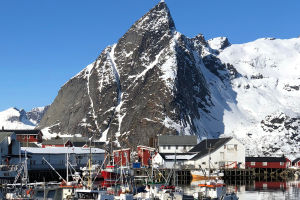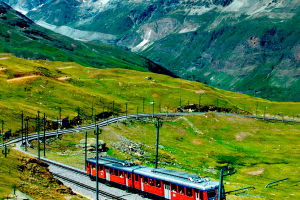Banff National Park is one of Canada’s most iconic natural attractions, offering everything from stunning mountain views to pristine lakes and diverse wildlife. As the country’s first national park, established in 1885, Banff attracts millions of visitors every year.
Whether you're an outdoor enthusiast looking to hike or ski, or just seeking to enjoy the breathtaking scenery, this park offers something for everyone. Let’s take a deep dive into everything you need to know to plan your perfect visit to Banff.
Location and How to Get There
Banff National Park is located in the province of Alberta, around 110 to 180 kilometers west of Calgary. If you’re flying into the area, Calgary International Airport is the closest major airport, and there are shuttle services available that can take you directly to Banff town, about a 1.5-hour drive away.
If you prefer to drive yourself, the park is accessible via the Trans-Canada Highway (Highway 1), which provides beautiful views as you approach the park. Renting a car is highly recommended for flexibility, as it will allow you to explore the park's hidden gems at your own pace.
Best Time to Visit Banff
The best time to visit Banff really depends on what you want to do, but here’s a breakdown of each season:
Winter (December - February): If you love skiing or snowboarding, winter is the time to visit. Banff is home to world-renowned ski resorts like Sunshine Village, Lake Louise Ski Resort, and Mt. Norquay. Snow enthusiasts will enjoy thrilling winter activities, and the snow-capped mountains offer some of the most picturesque landscapes.
Spring (March - May) & Fall (September - November): These shoulder seasons are quieter and less crowded, making them perfect for those who want to avoid the large summer crowds. Spring brings blossoming wildflowers, while fall is famous for vibrant foliage, especially around the Lake Louise area.
Entrance Fees and Opening Hours
To visit Banff National Park, you will need to purchase a park pass. The fees are as follows:
- Adult (18-64 years): $8 USD per day
- Senior (65+ years): $7 USD per day
- Youth (17 and under): Free
- Family/Group Pass (1-7 people per vehicle): $16 USD per day
Annual passes are also available if you plan on visiting multiple times within a year. The park is open year-round, but specific areas may have restricted access during winter due to snow or maintenance. Major roads, like the Icefields Parkway, are generally accessible year-round, but some trails and campsites may be closed in winter months due to weather conditions. Always check the official website for up-to-date information before your trip.
Top Attractions to Explore
Banff offers a wealth of stunning attractions. Here are some of the must-see highlights:
Lake Louise: Famous for its emerald green waters, Lake Louise is one of the most photographed locations in Canada. You can rent a canoe to paddle across the lake in summer or ice skate during winter.
Moraine Lake: Known for its vibrant blue waters, Moraine Lake is another iconic spot in the park. It’s ideal for photography, hiking, and even just relaxing by the shore.
The Banff Gondola: Take a ride on the Banff Gondola to the top of Sulphur Mountain. The panoramic views of the Bow Valley and surrounding mountains are absolutely breathtaking.
The Icefields Parkway: This scenic drive connects Banff to Jasper National Park, offering jaw-dropping views of glaciers, waterfalls, and towering peaks. Key stops along the route include the Columbia Icefield and Athabasca Falls.
Banff Springs Hotel: This historic hotel, designed to resemble a Scottish castle, is one of the most famous landmarks in the park. Even if you’re not staying there, the hotel’s stunning architecture and grounds are worth a visit.
Transportation Tips and How to Get Around the Park
While Banff town is walkable, getting around the park’s vast wilderness requires some planning. The Roam Transit system offers convenient bus routes connecting Banff, Lake Louise, and other popular destinations within the park. If you plan on hiking or exploring more remote areas, renting a car will give you the flexibility to visit locations like Moraine Lake, the Icefields Parkway, and other off-the-beaten-path spots. There are also shuttles available to take you up to the ski resorts in winter.
Practical Tips for Your Visit
Pack for All Seasons: Weather in Banff can change quickly, so it's a good idea to bring layers of clothing to stay comfortable throughout the day. Even in summer, temperatures at higher elevations can be chilly.
Wildlife Safety: Banff is home to bears, elk, and other wildlife. Keep a safe distance, and be aware of your surroundings at all times. If you’re hiking, make noise to alert animals of your presence and carry bear spray.
Avoid the Crowds: Banff can get quite busy, especially in summer. To avoid the crowds, try to visit popular attractions early in the morning or late in the afternoon. Weekdays are also less crowded than weekends.
Stay Hydrated and Bring Snacks: Whether you're hiking or driving, make sure to carry enough water and snacks, especially if you're exploring remote areas where facilities may be limited.
Unforgettable Memories Await
Banff National Park promises an adventure like no other. From tranquil lakes to towering peaks, every corner of the park offers breathtaking beauty. With a little planning and a sense of adventure, you’re sure to have a memorable experience that will stay with you long after you leave. So, get ready to explore, capture stunning photos, and immerse yourself in nature’s wonders. We can’t wait to see you out there, Lykkers!
Banff National Park Vacation Travel Guide | Expedia
Video by Expedia


